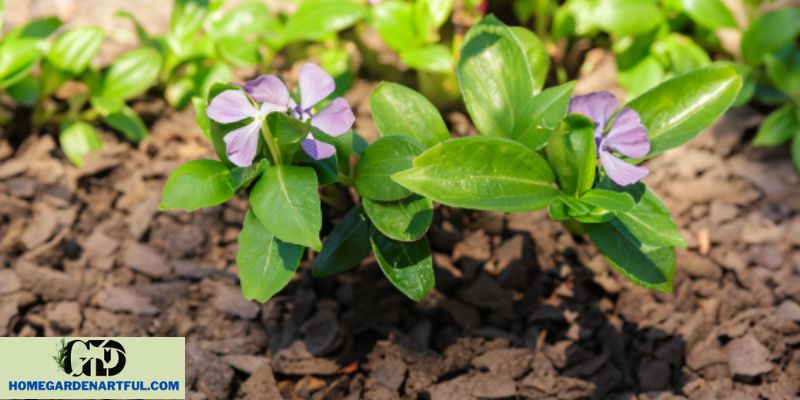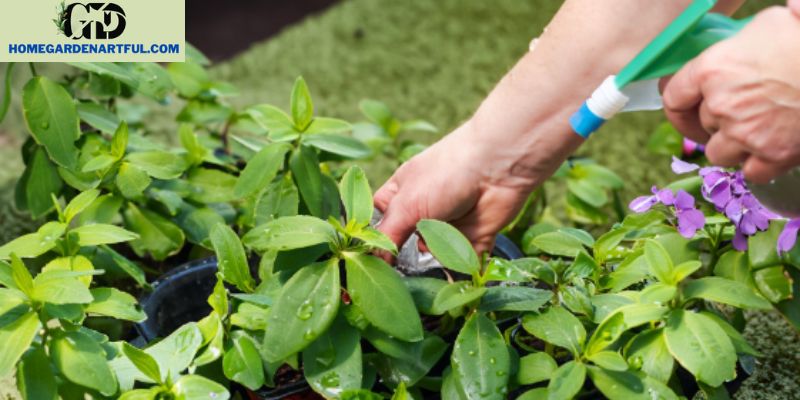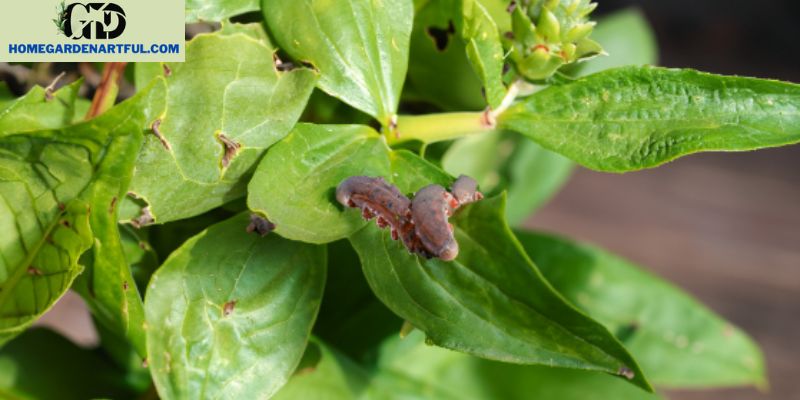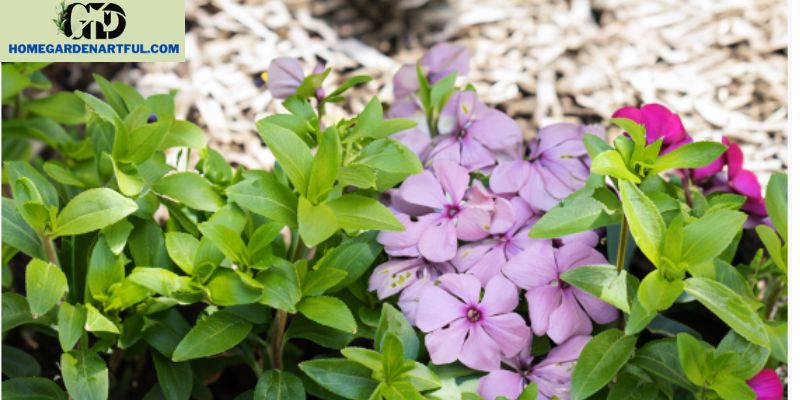Planting vinca at the right time is crucial for a successful and healthy growth. It is important to be aware of the growing season and temperature to ensure that the plant thrives. Vinca is a popular plant that is easy to grow, but proper timing is crucial in order to get the full benefits of this lovely plant.
Let’s find out more about Vinca When to Plant with homegardenartful.com below.
Key Takeaways:
- It is important to plant vinca at the right time to ensure healthy growth.
- Knowing the growing season and weather conditions is crucial for a successful planting.
- Vinca is an easy-to-grow plant, but appropriate timing is key for optimal results.
Understanding Vinca Varieties and Growing Zones
Vinca is a species of perennial plants that belong to the Apocynaceae family. The two most commonly grown varieties of vinca are vinca minor and vinca major. They are both excellent ground cover options and can be used in a variety of landscaping applications.
Vinca minor, also known as lesser periwinkle, is a creeping plant that grows to a maximum height of 6 inches. It has small dark green leaves and produces blue or violet flowers. Vinca minor is suitable for growing in USDA hardiness zones 4 to 8, which covers most regions of the United States.
Vinca major, also known as greater periwinkle, is a larger plant that can grow up to 18 inches tall. It has larger leaves and produces blue or purple flowers. Vinca major is suitable for growing in USDA hardiness zones 7 to 9, which covers the southern regions of the United States.
The growing zone of a plant is an important consideration when selecting the right plants for your garden. It is determined by the average annual minimum temperature in a region and provides a guide to the types of plants that are most likely to thrive in that area. Understanding the growing zones of vinca varieties is essential to ensure their successful growth.
Best Soil and Sunlight Conditions for Vinca

Vinca plants thrive in well-draining soil that is rich in organic matter. When preparing the soil, mix in compost or aged manure to improve its fertility. The ideal soil pH for vinca plants is between 6.0 and 7.5. It is important to avoid planting vinca in soil that is waterlogged or prone to flooding, as this can lead to root rot and other issues.
In terms of sunlight, vinca plants prefer partial shade to full sun. They can tolerate some shade, but too much shade can lead to poor growth and fewer blooms. It is best to plant vinca in a location that receives at least four hours of direct sunlight daily. If planting in an area with hot summers, it is recommended to provide some afternoon shade to prevent stress on the plants.
Planting Vinca from Seeds or Seedlings
If you decide to start your vinca plants from seeds or seedlings, it is essential to follow the correct steps for successful germination and growth.
Starting Vinca Seeds
The ideal time to start vinca seeds is indoors in late winter or early spring before the last frost. You can start the seeds in trays or individual pots, placing them in a warm, well-lit area.
Fill the containers with a quality soilless seed-starting mix and sow the seeds on the surface, covering them lightly with additional soil. Water the containers gently, using a spray bottle or misting device to avoid disturbing the seeds.
Once the seeds have germinated, keep the containers in a sunny location and water regularly. After a few weeks, the seedlings will have grown sufficiently to be transplanted into larger containers or directly into the garden.
Planting Vinca Seedlings
If you prefer to start with vinca seedlings, wait to purchase them until after the last frost. Before planting, prepare the soil by working in compost or other organic matter, ensuring good drainage.
When planting your seedlings, dig a hole deep enough to accommodate the roots and the surrounding soil. Place the seedling into the hole and gently firm the soil around it. Water thoroughly to settle the soil and encourage root growth.
Whether starting your vinca plants from seeds or seedlings, it is important to provide them with ideal growing conditions to promote healthy growth. With proper care and attention, your vinca plants will reward you with beautiful blooms throughout the growing season.
Caring for Vinca Plants: Watering, Fertilizing, and Pruning

Proper care is essential for the optimal growth and development of vinca plants. Below are some essential tips on watering, fertilizing, and pruning vinca:
Watering
Watering frequency depends on various factors, such as the climate and soil type. In general, it’s best to water vinca plants deeply once a week, rather than shallowly and frequently. Avoid overwatering, as it can lead to root rot. During the hot summer months, check the soil moisture daily and water as needed to keep the soil evenly moist.
Fertilizing
For best results, fertilize vinca plants every 4-6 weeks during the growing season, typically from early spring to early fall. Use a balanced, water-soluble fertilizer, applied according to the package instructions. Avoid overfertilizing, as it can lead to excessive foliage growth and fewer flowers.
Pruning
Pruning is an important practice for maintaining the health and appearance of vinca plants. Remove any dead or damaged stems and leaves as soon as you notice them. Pinch back the tips of the stems to encourage bushier growth and more flowers. You can also prune vinca plants in the fall to shape them or remove any overgrown stems.
By following these simple care guidelines, you can help ensure your vinca plants thrive and produce beautiful blooms all season long.
Common Diseases and Pests of Vinca

Vinca plants are generally hardy and disease-resistant, but they can still be susceptible to certain issues. Recognizing common diseases and pests of vinca can help prevent damage and ensure the continued health of your plants.
Diseases
One common disease that affects vinca plants is leaf spot. This fungal disease usually appears as circular or irregular yellow or brown spots on the leaves. To prevent leaf spot, avoid overhead watering and provide good air circulation around the plants. If leaf spot does occur, remove affected leaves and treat the plant with a fungicide.
Another disease that can affect vinca is root rot. This fungal disease causes the roots to decay and can quickly kill a plant. To prevent root rot, ensure that the soil is well-draining and avoid overwatering. If root rot is suspected, remove the infected plant and its soil and discard them to prevent the spread of the fungus.
Pests
One of the most common pests that can affect vinca plants is aphids. These small, soft-bodied insects feed on the sap of the plant and can cause leaves to curl and become distorted. To control aphids, spray the plant with a strong stream of water or treat with insecticidal soap or neem oil.
Another pest that can cause damage to vinca plants is spider mites. These tiny pests feed on the underside of leaves and can cause the leaves to turn yellow and fall off. To prevent spider mites, keep the plant moist and provide good air circulation. If an infestation occurs, treat with insecticidal soap or neem oil.
By recognizing and treating common diseases and pests, you can ensure the health and vitality of your vinca plants.
Conclusion
Planting vinca at the right time is crucial for a successful growth season. Understanding the different varieties of vinca and their respective growing zones can help you choose the right plant for your region.
It’s also important to take note of the ideal soil composition and sunlight requirements for vinca plants. Preparing the soil and choosing the right location can make a significant difference in your plant’s growth.
Whether you’re planting vinca from seeds or seedlings, ensuring proper germination and care is essential. This includes regular watering, fertilizing, and pruning to promote healthy growth and vibrant blooms.
However, it’s important to be aware of common diseases and pests that can affect your vinca plants, such as leaf spots and root rot. Identifying and treating these issues early can help prevent further damage to your plants.
Overall, by following the guidelines provided in this article, you can maximize the success of your vinca plants and enjoy a beautiful garden. Remember, timing is everything when it comes to planting vinca.
FAQ
Q: When is the best time to plant vinca?
A: The optimal time to plant vinca is during the growing season when the temperature and weather conditions are favorable for its growth.
Q: What temperature is ideal for planting vinca?
A: Vinca thrives in temperatures between 65-75 degrees Fahrenheit. It is important to avoid extreme heat or frost when planting.
Q: Does vinca prefer full sun or shade?
A: Vinca prefers full sun, but it can tolerate partial shade. It is important to provide at least 6 hours of sunlight to ensure healthy growth.
Q: What type of soil does vinca require?
A: Vinca prefers well-draining soil with a slightly acidic pH. It is important to prepare the soil by adding organic matter and ensuring good drainage.
Q: How often should I water my vinca plants?
A: Vinca plants should be watered regularly to keep the soil moist but not waterlogged. Aim to water them deeply once or twice a week, depending on the weather conditions.
Q: Do vinca plants require fertilization?
A: Vinca plants benefit from regular fertilization to promote healthy growth and blooms. Use a balanced fertilizer once a month during the growing season.
Q: How should I prune my vinca plants?
A: Pruning vinca plants is not necessary, but if you want to control their size or shape, you can trim them back in early spring. Remove any dead or damaged foliage to maintain their appearance.
Q: What are the common diseases and pests that affect vinca?
A: Vinca plants are susceptible to leaf spots and root rot. Watch out for signs of yellowing leaves or wilting. Common pests include aphids, slugs, and snails.


